For the last several months, we've seen monarchs laying eggs on our narrow-leafed milkweed.
A daily check yielded "zero" caterpillars. Zero. Nada. Zilch. One reason is apparent: two nearby nests of Western scrub jays filled with chirping babies. Birds aren't known for eating a large quantity of monarch caterpillars--they don't taste good--but they will still eat a few.
They didn't eat this one.
It was tucked away, hidden from sight. Then we found another caterpillar, also hidden.
In the interests of conservation--and to prevent predation--we placed them inside our indoor butterfly habitat, purchased last year from the gift shop at the Bohart Museum of Entomology, the University of California, Davis.
The rest, as they say, is history and herstory. A male eclosed from the first chrysalis, and a female from the second.
It's one of Nature's miracles. From an egg, to a caterpillar to a chrysalis to an adult Danaus plexippus.
One week, it's a hungry fifth-instar caterpillar...then it's a gold-dotted, jade-green chrysalis, a joy to see. When the chrysalis turns transparent, you can make out the colorful butterfly inside--Nature's gift that's soon to eclose.
From chrysalis to adult, the male took 10 days.
From chrysalis to adult, the female took 9 days.
We've already released the male. He soared high into the sky, at least 80 feet, and headed for an oak tree as a Western scrub jay eyed him. Whew! The predator did not pursue him.
The second monarch, the female, just eclosed this afternoon. It's Freedom Day tomorrow.
Attached Images:
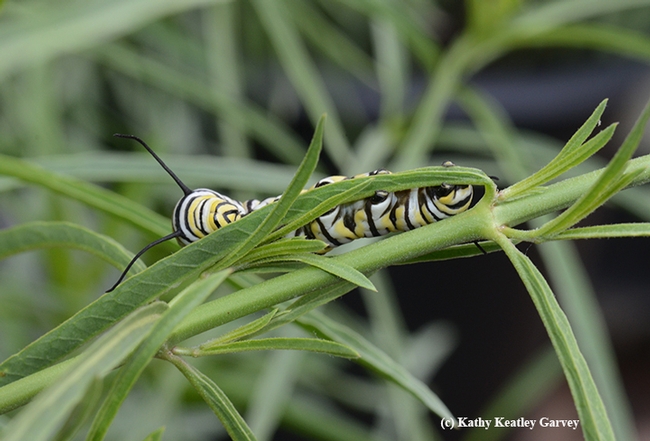
A fifth instar caterpillar partially hidden in the narrow-leafed milkweed. (Photo by Kathy Keatley Garvey)
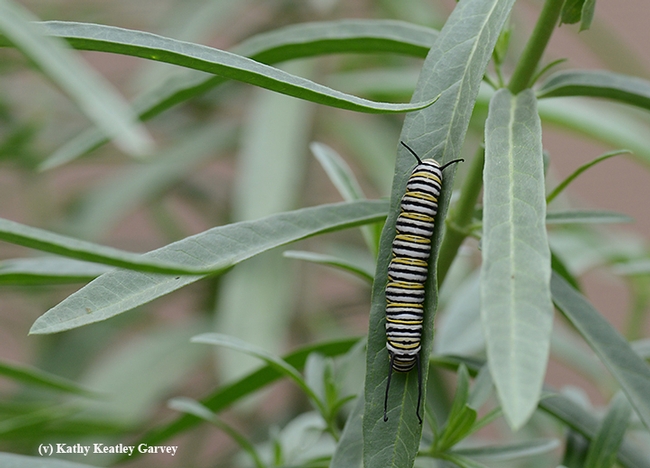
Hidden, but there it is! (Photo by Kathy Keatley Garvey)
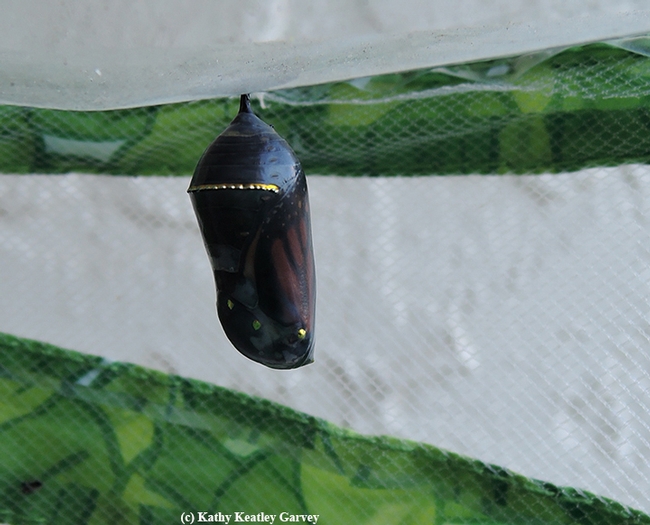
The chrysalis turned from jade green to transucent. You can see the butterfly inside, almost ready to eclose. (Photo by Kathy Keatley Garvey)
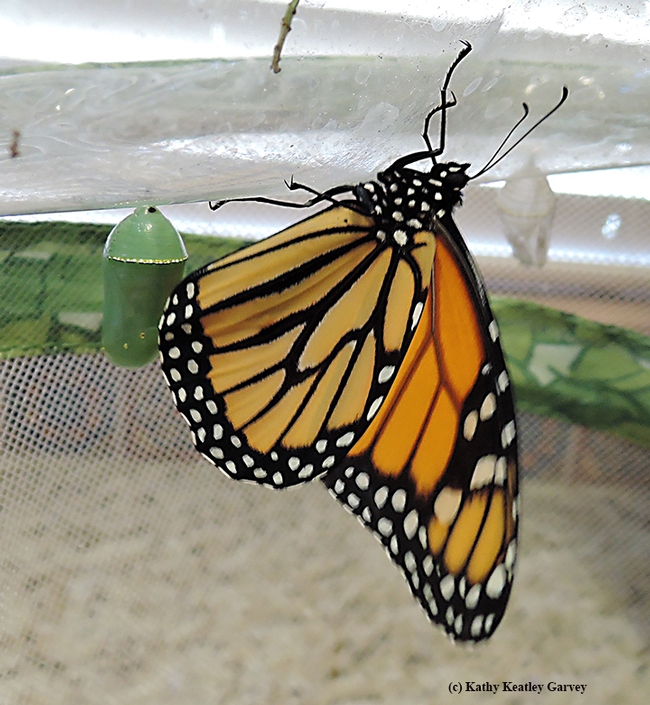
The newly emerged male monarch dries its wings. At left is the second chrysalis, which turned out to be a female. (Photo by Kathy Keatley Garvey)
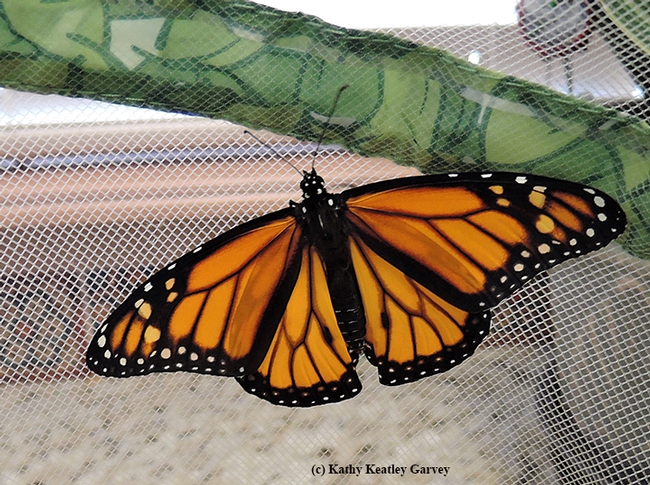
The first male monarch of the season, ready to be released. (Photo by Kathy Keatley Garvey)